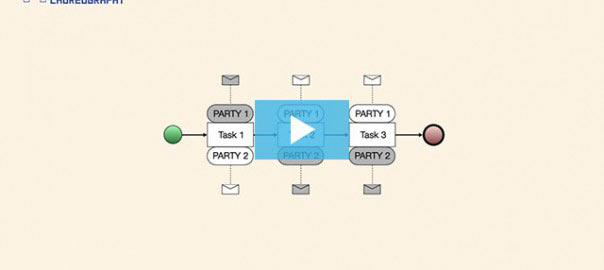Collaboration diagrams are used to precisely define the flow of an organizations’ internal processes as well business collaborations.
However, sometimes complex collaborations need more detail, and this information can be captured by choreography diagrams.
A Choreography diagram is a type of process, but differs in purpose and behaviour from a standard BPMN process.
Choreography diagrams define the way business participants coordinate their interactions. So, the focus is not on the work performed, but rather on the exchange of information between involved parties.
This means a choreography diagram acts as a contract among all involved parties. Once this contract has been defined, each party can transform it into their private process or else all parties can work together to transform the choreography into a collaboration diagram.
A choreography diagram includes a choreography process, which defines a sequence of activities representing an interaction between two or more parties.
As each step in the Choreography involves two or more participants, a choreography is defined outside of a pool.
A choreography activity is depicted as a rectangle.
The two bands, one at the top and one at the bottom, represent the parties involved in the interaction captured by the activity.
A white band is used for the initiating party whilst a dark band is used for the recipient.
The position of each band in relation to the task box is left to the modeller, as long the two bands are on the opposite sides.
An envelope represents a message sent by the corresponding party. Return message envelopes of a two-way interaction are darkened.
To establish an order dependency between two interactions, the sender of the second activity has to be involved in the first activity, otherwise the party will not be able to determine when to send the message.




.png)


